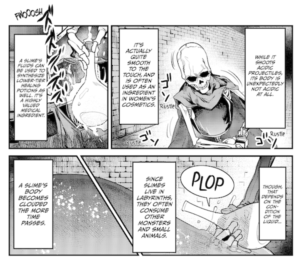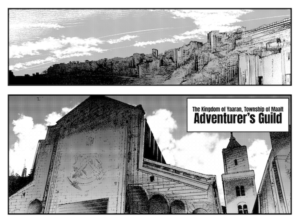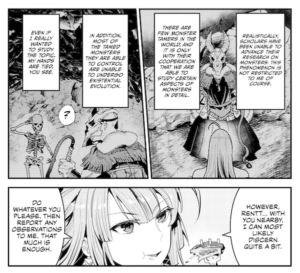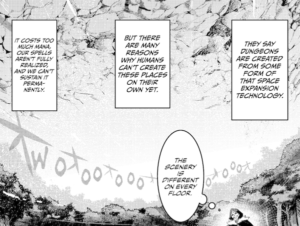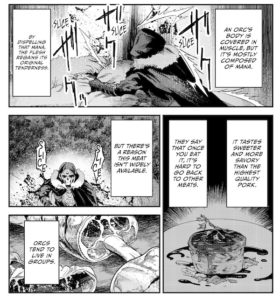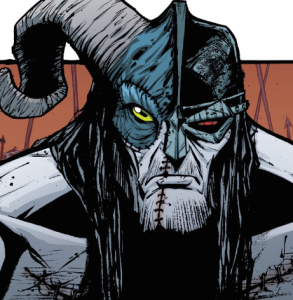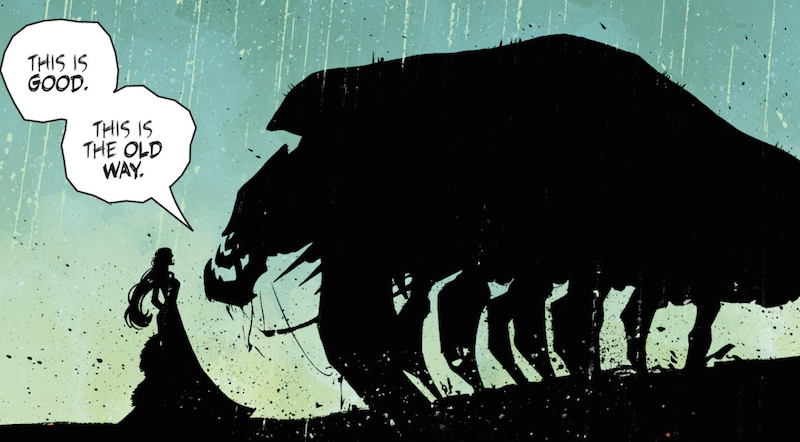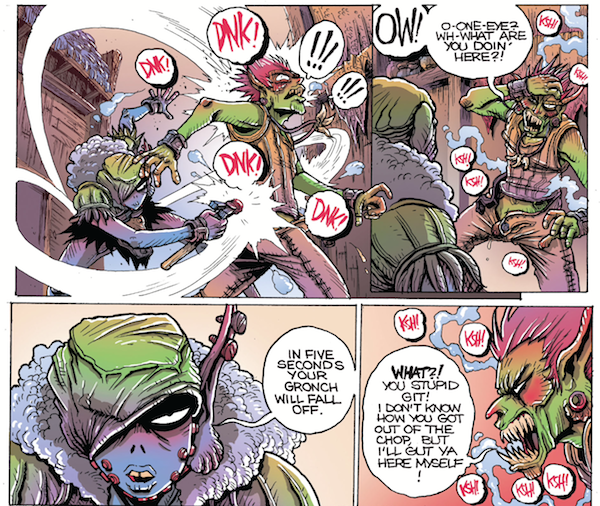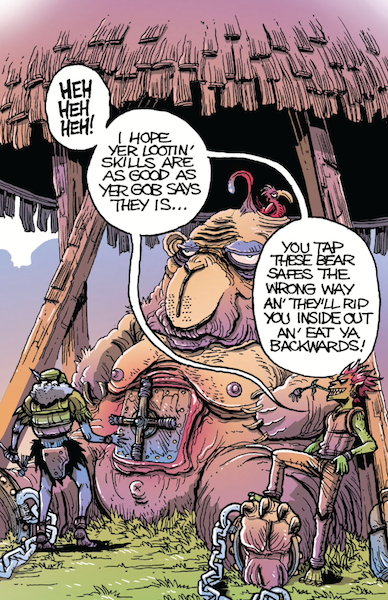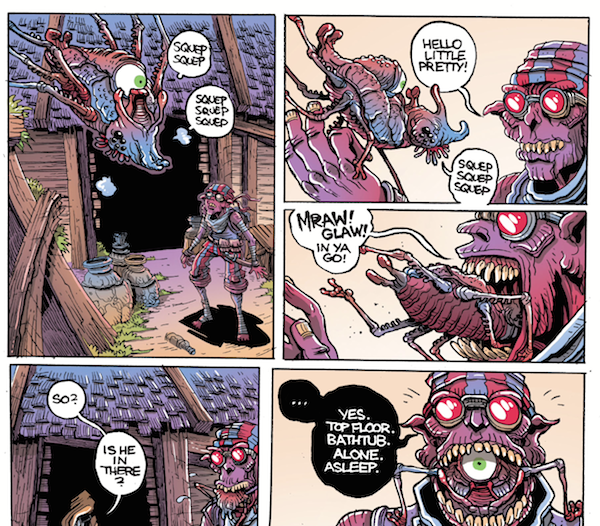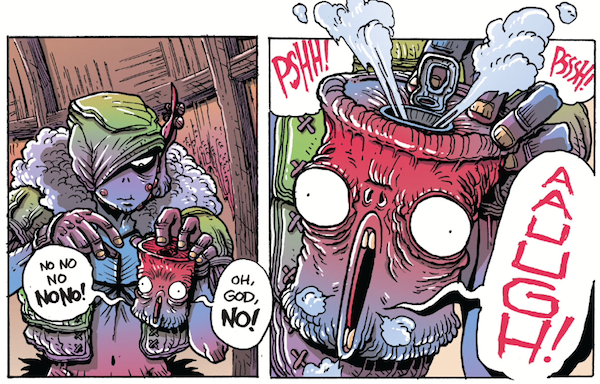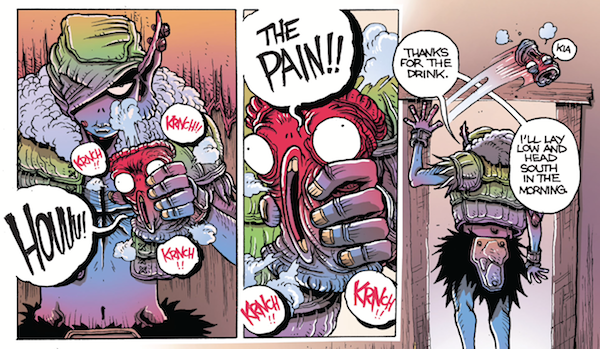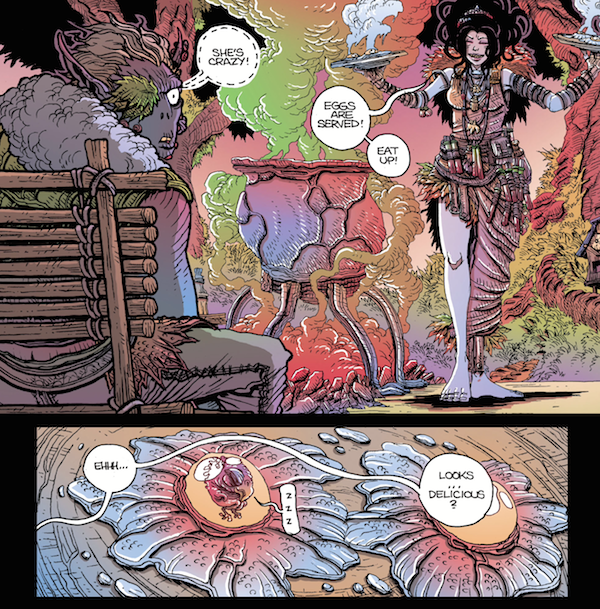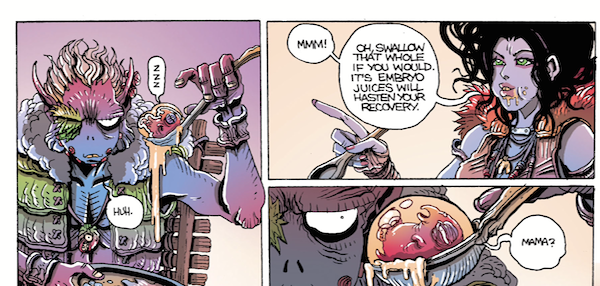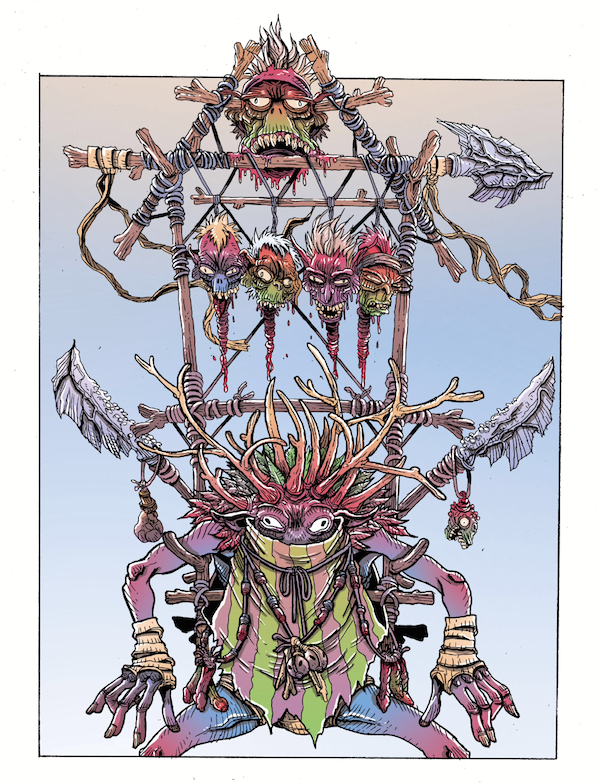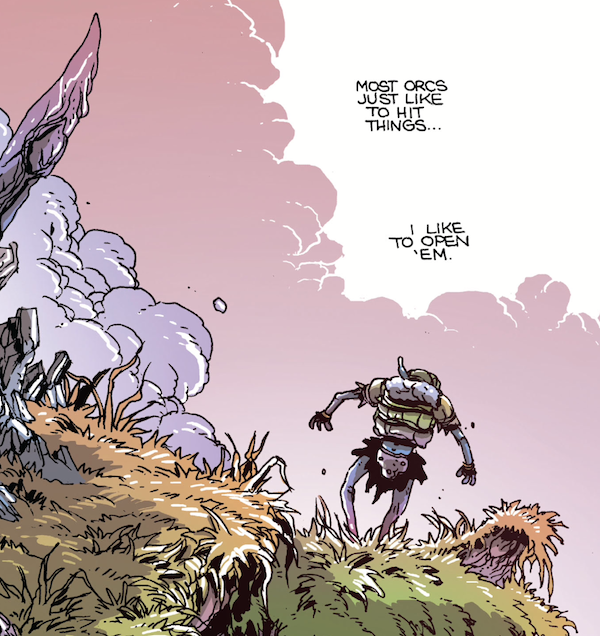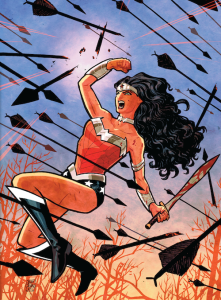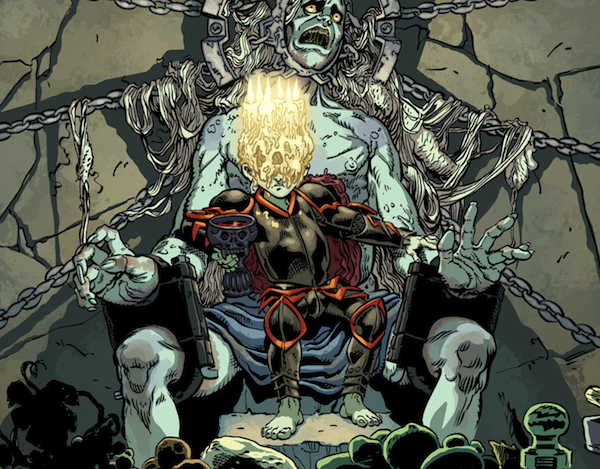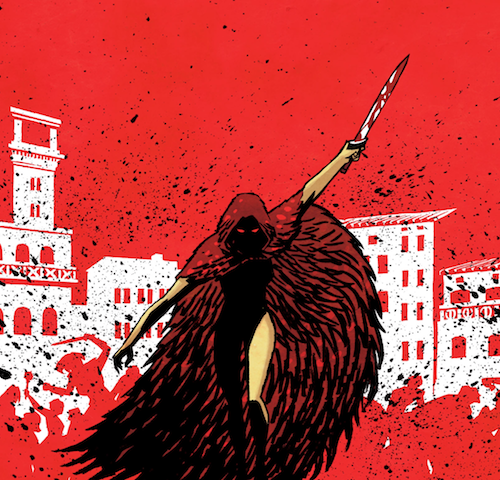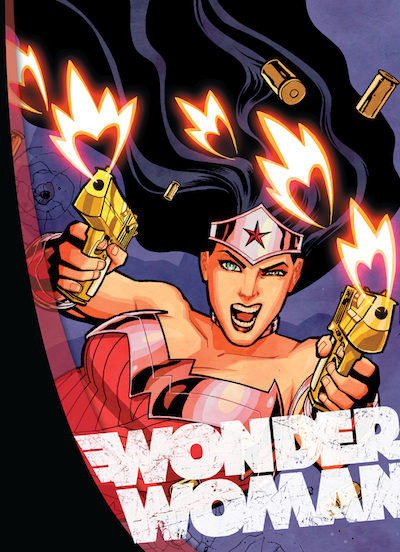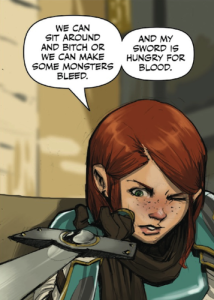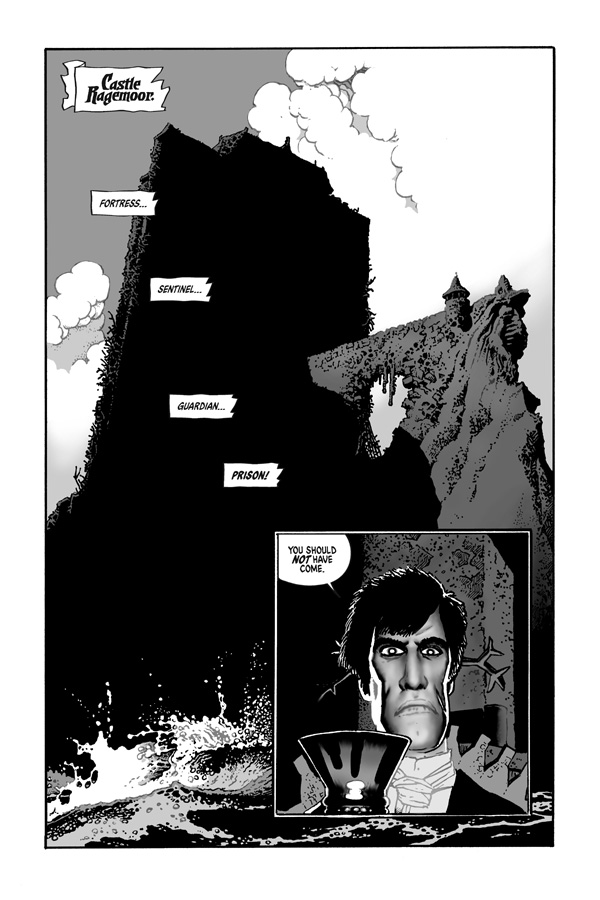I follow a few ongoing manga series on Comixology—Delicious in Dungeon, Made in Abyss, Goblin Slayer. Ubel Blatt, though that is finished and I am way behind. Berserk, though that comes out so infrequently it is hard to think about as following. As you can probably see, I have a type: occidentalist fantasy, often influenced (perhaps self-consciously) by tabletop roleplaying tropes. Last time I signed in, I noticed this new series in my recommendations—The Undead Unwanted Adventurer—and it seemed to hit a number of those notes so I decided to give it a try. As it turns out, it is something like lighthearted Dark Souls pseudo fan fic, which has the potential to be, ahem, exactly my sort of thing. In terms of common manga genres: shounen isekai, leaning seinen, with a bit of harem going on, though though the isekai aspect is a rebirth rather than a transportation. (This post mostly avoids plot spoilers, apart from the initial event alluded to in the manga title, but it does contain some minor setting spoilers. Also, for the panel excerpts, keep in mind you should read from right to left.)
First, let’s get the judgments out of the way. This is a smaller-scale, more niche offering than some of the other series listed above. Nakasone’s art is pleasant enough, but lacks the precision and emotion of Miura’s work on Berserk, the richness and complexity of Nihei’s work on Blame!, or the saturated lightness of Tsukushi’s work on Made in Abyss. Comparisons with such accomplished artists may be unfair, but I want to set expectations. Further, the best art in The Undead Unwanted Adventurer is probably in the fan service panels—more on that below. The writing, as well, is good enough to get the story across, but otherwise unremarkable. The story began as a light novel in Japan, before spawning a manga manifestation, and the light novel medium is comparable in some ways with “young adult” fiction in the Western market. So, what we are left with is a story that will rise and fall based on the world building and manipulation of genre touchstones, and how it rewards or surprises reader expectations. Overall, the series kept me curious and entertained enough to plow through the three available volumes in a matter of days.
A common aspect of this subgenre is in-world justification or representation of RPG game elements. This can be crude—such as the magical HUD that characters consult in Rise of the Shield Hero—or clever—such as the “adventure sheet” adventurer guild registration form in Goblin Slayer. When done well, such aspects can suggest ways to connect game elements to setting elements. There is a kind of appreciation seeing in-setting explanations for something like a the Monster Manual hierarchy of undead, or similar game artifacts. Undead Adventurer has a lot of this, including different kinds of “mana” (roughly corresponding to character classes), adventurer guild ranking with exams, mega-dungeon exploration serving almost as borderlands industry, and so forth.
About the harem thing. Our protagonist is a largely misunderstood and unappreciated loner who, throughout the course of adventures, accumulates a number of mostly female sidekicks. Our hero has the opportunity to save or otherwise assist these supporting characters, who come to appreciate his quirks and become fiercely loyal. Sound familiar? (I am somewhat surprised that I was unable to find an overly specific subgenre term for this dynamic given how common it is, but here we are.) This sort of escapism can range from playful wish-fulfillment to bitter resentment, and Unwanted Undead Adventurer lands firmly in the range of playful for me, though it occasionally deserves some eye-roll.
One of the most enjoyable qualities of occidentalist manga in this vein, for me at least, is seeing the common tropes generally taken seriously rather than constantly subverted, but also filtered through the lens of another culture, or idiosyncrasies of a particular creator, which lends novelty and the occasional (but regular) instance of surprising, substantial deviations from common expectations. For example, orcs in the world of the Undead Adventurer are brutish, pig-faced humanoids—that all seem to be terrifying giants, hunted because the flesh of orcs is particularly savory. Recognizable, but warped, and somewhat ghoulish. Perhaps this is a way to approximate the New Sincerity turn, but in genre fantasy, for those of us that grow bored of constant genre irony and deconstruction?
(Panels excerpted here are an assortment from volumes 1 through 3.)

